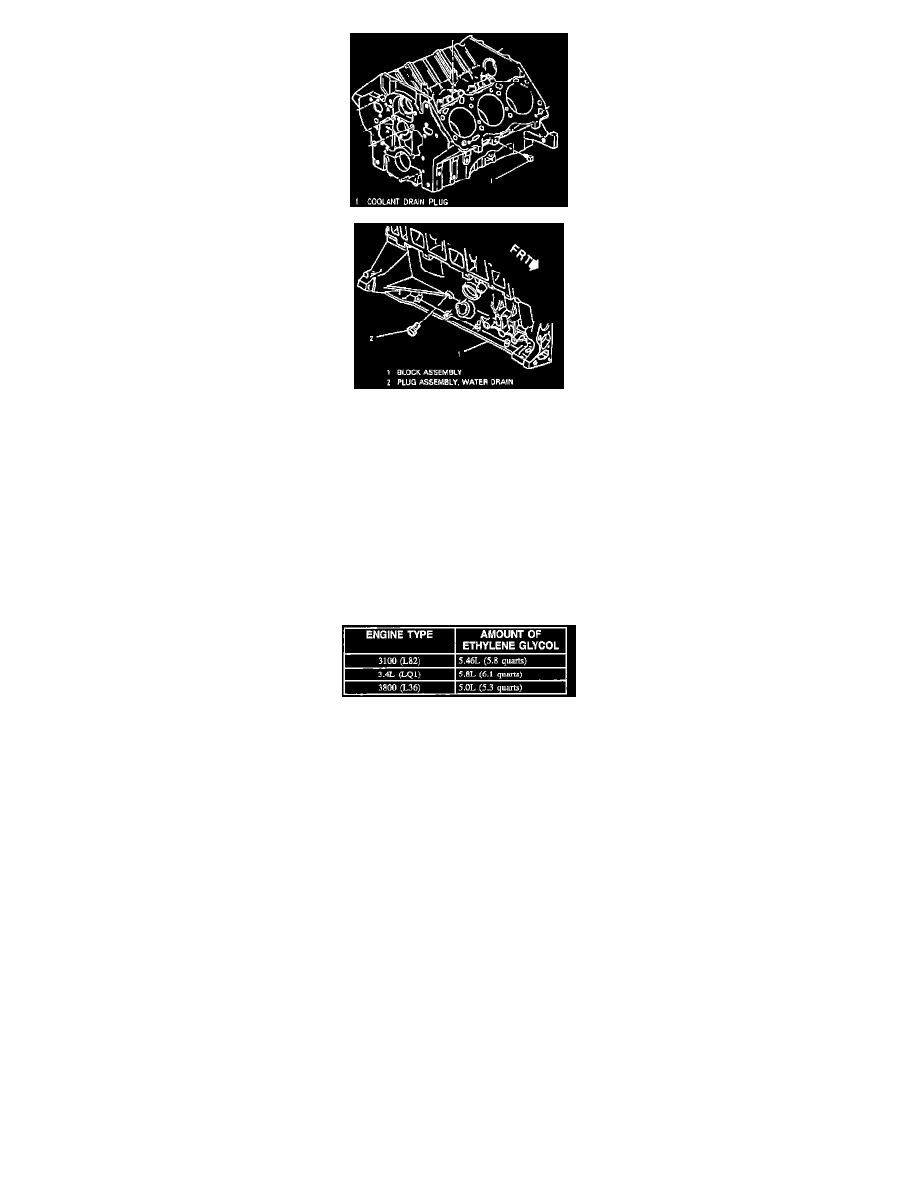Grand Prix V6-3100 3.1L VIN M SFI (1996)

7. Remove the engine block drains. Remove both engine block drains. The front engine block drain is located between the starter and the engine oil
filter. The rear engine block drain is located by the engine crank sensor.
8. Allow the coolant to drain completely.
Important: Dispose of used coolant in a proper fashion, i.e., in a used coolant holding tank. NEVER POUR USED COOLANT DOWN THE
DRAIN! Ethylene glycol antifreeze is a very toxic chemical; disposing of it into the sewer system or ground water is both illegal and ecologically
unsound!
Refilling
1. Close the radiator drain valve. Reinstall all engine block drains (knock sensors on 3S00). Reconnect the inlet hose to the engine oil cooler.
2. Install the coolant recovery reservoir and empty. Flush the reservoir with clean water, drain and reinstall.
3. Slowly fill the cooling systems through the radiator neck using the following procedure:
^
If the coolant system has been flushed, first add 100 percent ethylene glycol in the amount listed in figure for the appropriate engine
application. Then slowly add clean water to the system until the level of the coolant mixture has reached the base of the radiator neck.
Important:
^
When refilling the engine cooling system, add two engine coolant supplement sealant pellets, GM P/N 3634621 or equivalent and GM approved
new Ethylene Glycol coolant antifreeze GM P/N 9985809.
^
If the cooling system is being refilled ONLY (no flush), a 50 percent ethylene glycol and 50 percent clean water mixture should be used to fill
the system. Fill the system until the level of the 50/50 mixture has reached the base of the radiator neck. Wait two minutes and recheck the
level of the coolant mixture, add a 50/50 ethylene glycol/water mixture as necessary to restore the coolant mixture level to the base of the
radiator neck.
4. Install the radiator cap making certain the arrows line up with the overflow tube.
5. Close all air bleeds. DO NOT over-torque the air bleed valve. The air bleed valve is made out of brass.
6. Fill the coolant reservoir with a 50 percent ethylene glycol and a 50 percent clean water coolant mixture. The proper amount of this mixture to be
installed into the coolant reservoir is listed below:
^
All engines Add 1.7 liters (1.8 quarts) of a 50/50 mixture of ethylene glycol and clean water to the coolant recover reservoir.
NOTICE: The low coolant indicator lamp may come on after this procedure. After operating the vehicle so that the engine heats up and cools down
three times, if the low coolant indicator lamp does NOT go out, or fails to come on at ignition check and coolant is at the level indicated in step 3 go to
Testing and Inspection. If at any time the "TEMP" warning indicator comes on, immediate action is required.
